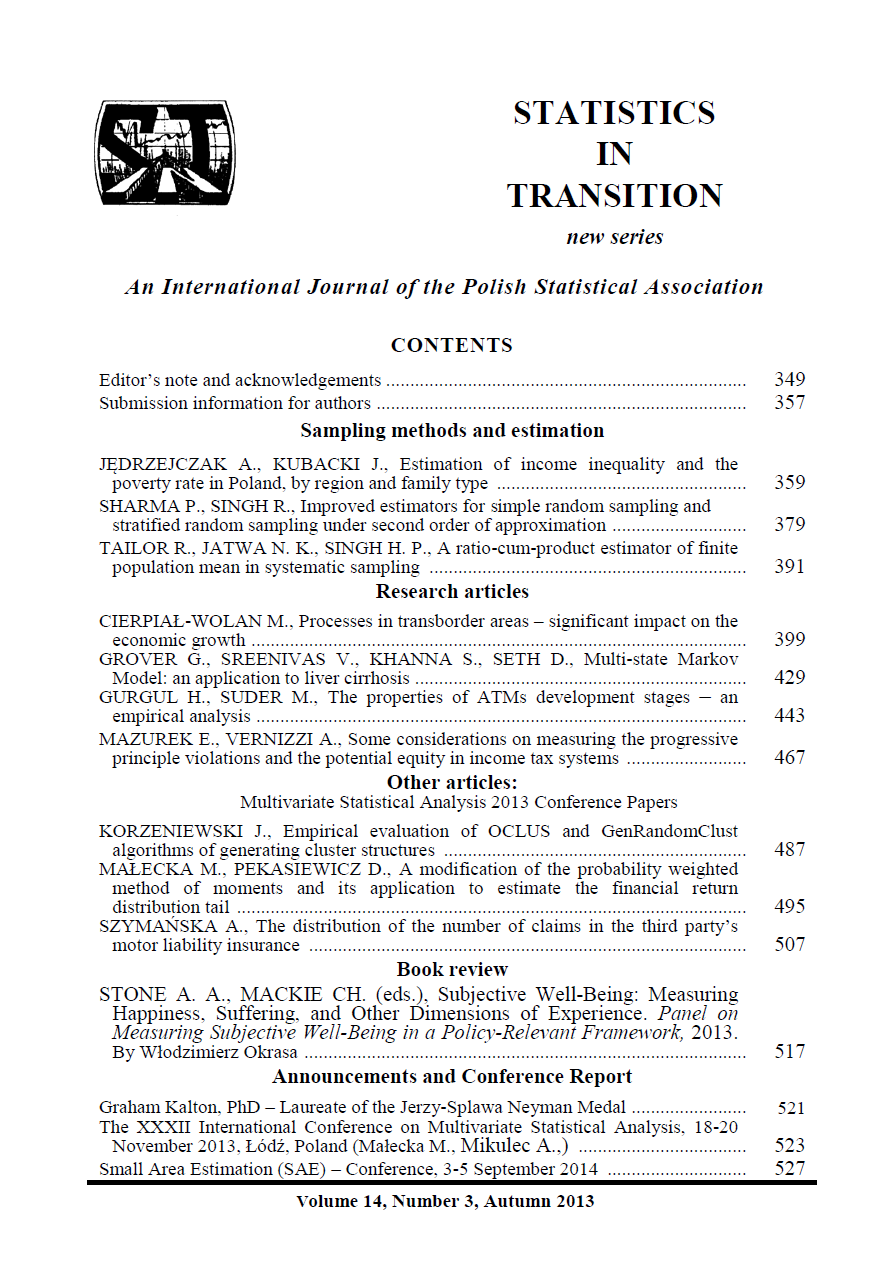ARTICLE
ABSTRACT
In the automobile insurance tarification consists of two stages. The first step is to determine the net premiums on the basis of known risk factors, called a priori ratemaking. The second stage, called a posteriori ratemaking is to take into account the driver's claims history in the premium. Each step usually requires the actuary's selection of the theoretical distribution of the number of claims in the portfolio. The paper presents methods of consistency evaluation of the empirical and theoretical distributions used in motor insurance, illustrated with an example of data from different European markets
KEYWORDS
distribution of the number of claims, civil liability motor insurance of vehicle owners
REFERENCES
DENUIT M., MARECHAL X., PITERBOIS S., WALHIN J., (2007). Actuarial Modelling of Claim Counts: Risk Classification, Credibility and Bonus-Malus Systems, John Wiley & Sons, England.
DOMAŃSKI CZ., (1990). Testy statystyczne, PWE, Warszawa.
HEILMANN W. R., (1988). Fundamentals of Risk Theory, Verlag Versiecherungswirtschaft, Karlsruhe.
KORDOS J., (1973). Metody analizy i prognozowania rozkładów płac i dochodów ludności, PWE, Warszawa.
LEMAIRE J., (1995). Bonus-Malus Systems in Automobile Insurance, Kluwer, Boston.
OTTO W., (2002). Matematyka w ubezpieczeniach. Ubezpieczenia majątkowe, WNT, Warszawa.
PANJER H. H., WILLMOT G. E., (1992). Insurance risk models, Society of Actuaries, Schaumburg.
ŚLIWIŃSKI A., (2002). Ryzyko ubezpieczeniowe, taryfy - budowa i optymalizacja, poltext, Warszawa
